Dronelost.com – DJI Mini 2 SE and the DJI Mini 3 are making waves in the industry. These compact and portable drones have revolutionized the way we capture photos and videos from above. But which one is truly the king of the skies?
The DJI Mini 2 SE, an entry-level drone, is designed with beginners and casual users in mind. On the other hand, the DJI Mini 3 is a more advanced model, offering enhanced features and capabilities that appeal to more experienced users and professionals.
Design-wise, both the Mini 2 SE vs Mini 3 maintain the signature compact and lightweight form factor synonymous with DJI’s Mini series. This design philosophy is critical for portability and compliance with regulatory requirements in many regions, where drones under a certain weight limit are subject to fewer restrictions
Despite their similarities in size and weight, the two models exhibit subtle differences in aesthetics and build quality, reflecting their positioning in the DJI lineup. Both drones benefit from DJI’s expertise in drone technology, offering stable flight, reliable controls, and a range of safety features.
But which one is truly worth your hard-earned money? Join us as we dive into the intricate details of these two drones, comparing their features, performance, and overall value. Get ready to be captivated by the world of aerial photography and videography, as we dissect the DJI Mini 2 SE vs DJI Mini 3.
DJI Mini 2 SE Vs DJI Mini 3, Design and Portability
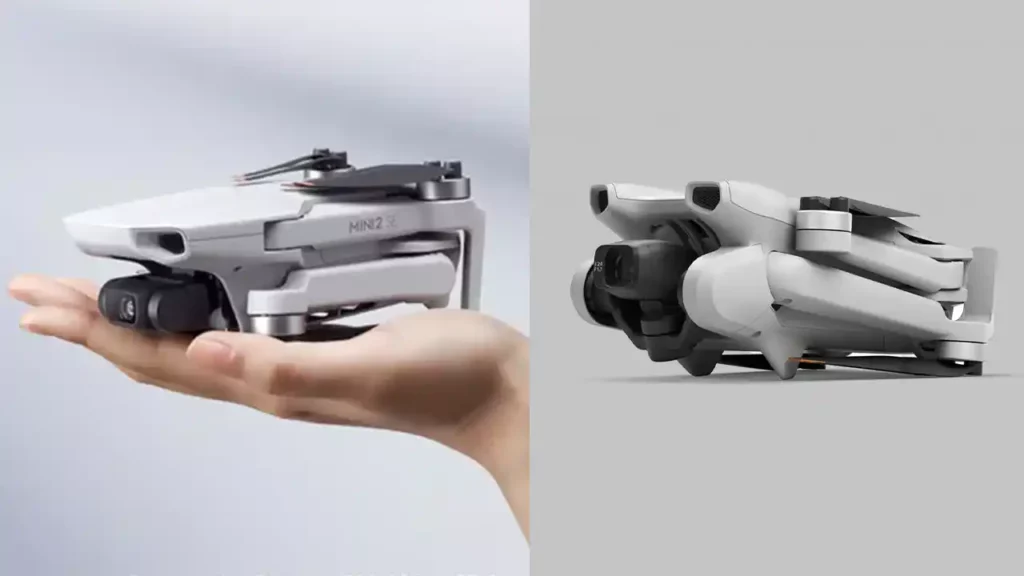
One of the key advantages of both the DJI Mini 2 SE vs DJI Mini 3 is their compact and lightweight designs. These drones are designed to be easily carried on-the-go, making them perfect for outdoor adventures or travel. With their foldable arms, they can quickly be folded up and fit into a backpack or even a pocket.
However, the DJI Mini 3 takes it a step further by offering additional durability with its enhanced frame structure. This means that the DJI Mini 3 is more resilient to accidental bumps and falls, providing a peace of mind to users who may be concerned about the drone’s safety during flights.
Furthermore, the DJI Mini 3 introduces vibrant color options, allowing users to choose from a range of visually appealing designs. This adds a touch of personalization to the drone, making it not just a powerful flying companion, but also a style statement. On the other hand, the DJI Mini 2 SE maintains a sleek and minimalist aesthetic that appeals to those who prefer a more understated look.
Both drones are visually appealing and offer excellent portability, making them suitable for drone enthusiasts who are always on the move.
DJI Mini 2 SE Vs DJI Mini 3 Flight Performance
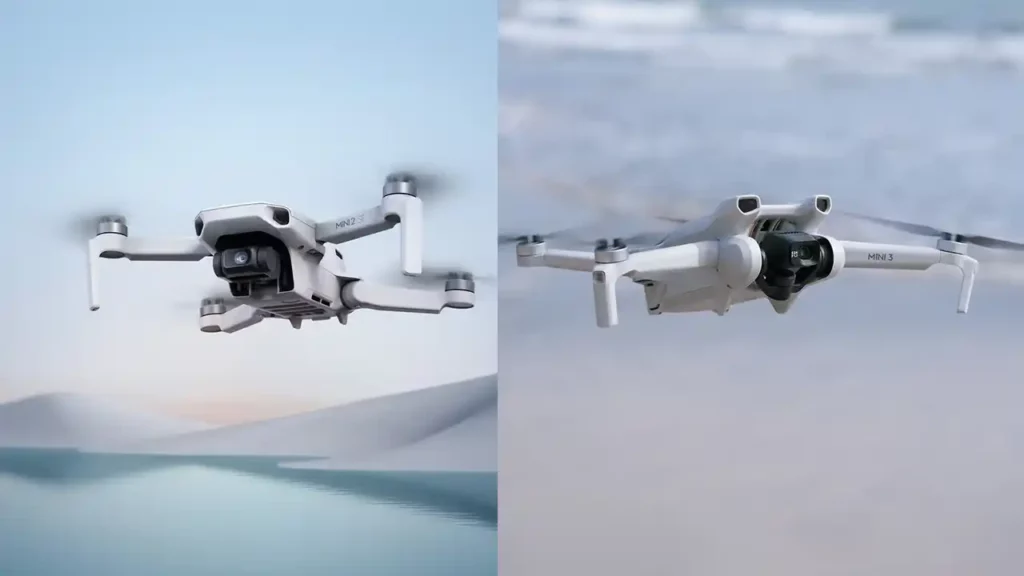
When it comes to flight performance, the DJI Mini 2 SEvs DJI Mini 3 excel in their own ways. The DJI Mini 2 SE is equipped with a powerful motor, allowing it to reach a maximum speed of up to 35.8 mph (57.6 kph).
It also has a maximum flight time of 31 minutes, which is impressive for a drone of its size. This extended flight time ensures that you can capture more stunning footage without the need for frequent battery changes.
On the other hand, the DJI Mini 3 offers a slightly faster maximum speed of up to 36 mph (58 kph). While the difference may seem minimal, it can make a significant impact when flying in windy conditions or trying to capture fast-moving subjects.
Additionally, the DJI Mini 3 features an upgraded transmission system, providing a more stable and reliable connection between the remote controller and the drone. Both drones come with GPS and vision sensors, ensuring precise hovering and steady flights.
They also offer intelligent flight modes such as QuickShots, allowing you to capture professional-looking photos and videos effortlessly. Whether you are a beginner or an experienced pilot, these intelligent flight modes can add creativity and variety to your aerial photography.
DJI Mini 2 SE Vs DJI Mini 3 Camera Capabilities

The DJI Mini 2 SE is equipped with a 12-megapixel camera that delivers exceptional image and video quality. With support for up to 4K resolution at 30 frames per second, it ensures sharp and detailed footage. The Mini 2 SE also features a 3-axis motorized gimbal, which provides stability and smoothness to your shots.
What sets the Mini 2 SE apart from its predecessor is the range of intelligent flight modes it offers. These modes, including QuickShots and Panorama, enhance creativity and make it easier for users to capture stunning aerial footage with just a few taps on their smartphone or controller.
Whether you’re a beginner or an experienced drone pilot, the DJI Mini 2 SE’s camera performance and capabilities undoubtedly meet the expectations of most users. It allows you to capture breathtaking moments from above and explore various creative possibilities.
The DJI Mini 3 takes the camera capabilities to the next level with its more advanced 12-megapixel camera. Similar to the Mini 2 SE, it supports up to 4K resolution, but at a slightly lower frame rate of 24 frames per second. Nevertheless, the Mini 3 still delivers impressive image quality with excellent clarity and detail.
Just like its predecessor, the Mini 3 is equipped with a 3-axis motorized gimbal, ensuring stability and smooth footage even in challenging conditions. However, what sets the Mini 3 apart are its additional shooting modes.
One of the standout features of the Mini 3 is the Hyperlapse mode. This mode allows you to capture stunning time-lapse videos with unique motion effects. Whether you want to showcase the bustling city streets or the mesmerizing sunset, the Hyperlapse mode lets you add a captivating touch to your footage.
Another notable feature of the Mini 3 is AEB (Auto Exposure Bracketing), which automatically captures multiple shots at different exposure levels. This feature comes in handy when shooting in challenging lighting conditions, as it ensures a well-exposed final image by combining the best parts of each shot.
Remote Controller and Connectivity
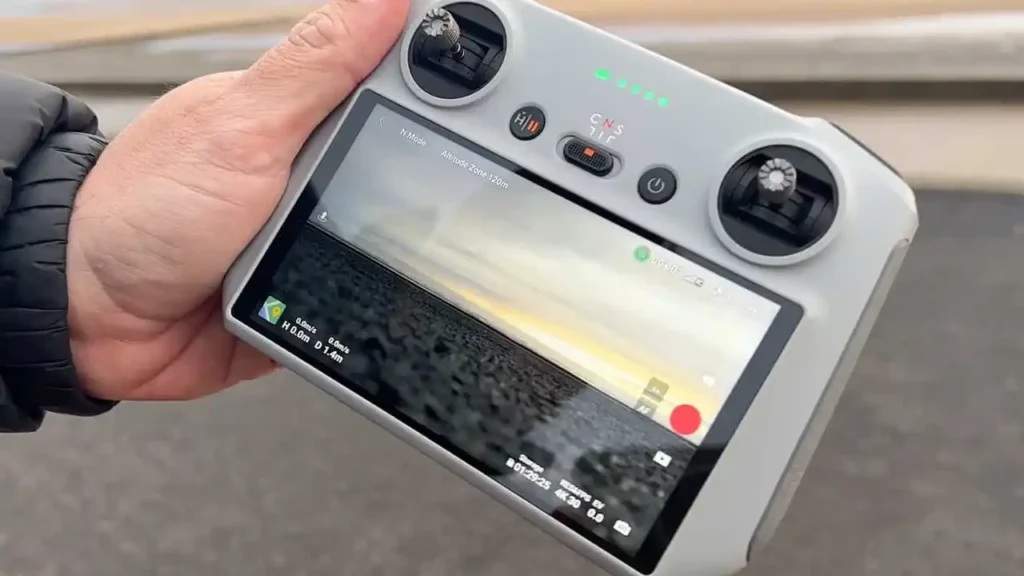
The DJI Mini 2 SE vs DJI Mini 3 offer users dedicated remote controllers that are designed to provide a seamless and intuitive flying experience. These controllers are equipped with detachable control sticks and a built-in smartphone holder, allowing users to monitor the drone’s camera view in real-time.
One of the key features of both drones is their support for OcuSync 2.0 transmission technology, which ensures stable and reliable connections between the drone and the remote controller. This advanced technology enables smooth live video streaming and control from a distance of up to 10 kilometers (6.2 miles), providing users with an impressive range for their aerial adventures.
Moreover, DJI offers an array of additional accessories that can enhance the flying experience even further. One such accessory is the DJI Smart Controller, which provides a larger and more immersive display for users. This controller features a built-in screen, eliminating the need for a separate smartphone or tablet during flight.
With the DJI Smart Controller, users can enjoy a crystal-clear view of the drone’s camera feed without the hassle of connecting external devices. Its intuitive interface and customizable buttons make controlling the drone even easier, allowing users to focus on capturing stunning aerial footage.
When it comes to connectivity, both the DJI Mini 2 SE vs DJI Mini 3 utilize OcuSync 2.0 technology to ensure a reliable and stable connection. This technology operates on a dual-frequency band, automatically switching between 2.4 GHz and 5.8 GHz for optimal performance in different environments.
The OcuSync 2.0 transmission system provides strong anti-interference capabilities, minimizing signal dropouts and ensuring smooth communication between the drone and the remote controller. This means that users can fly their drones with confidence, knowing that they will maintain a solid connection even in challenging conditions.
Furthermore, the OcuSync 2.0 technology employed by both drones supports automatic channel switching. This feature allows the drones to automatically select the channel with the least interference, optimizing the signal strength and maximizing flight stability.
Thanks to the impressive connectivity capabilities of both the DJI Mini 2 SEvs DJI Mini 3, users can confidently navigate through different terrains and capture breathtaking footage from various perspectives. Whether it’s flying in an urban area with many signal sources or exploring remote landscapes where interference might be an issue, these drones have the technology to adapt and deliver exceptional performance.
User-Friendly Interfaces and Safety Features
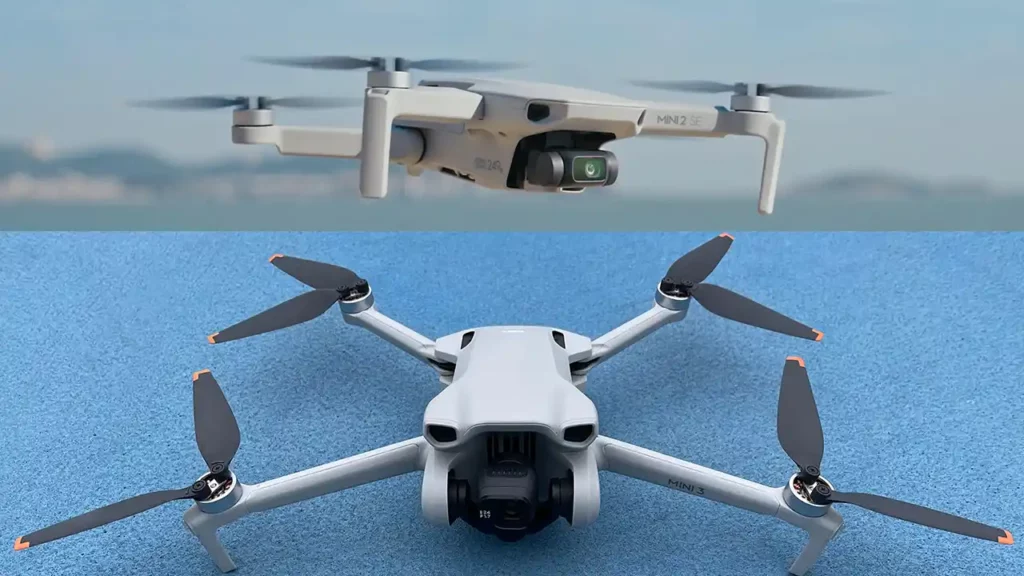
Both the DJI Mini 2 SE vs Mini 3 are designed to be user-friendly, even for those who are new to drones. They feature intuitive controls and straightforward navigation, ensuring a smooth and hassle-free flying experience.
Additionally, these drones come equipped with various safety features, such as GPS and obstacle avoidance systems, to prevent accidents and collisions. The Mini 2 SE has a Vision Sensor + GPS Precise Hovering system, allowing it to hover precisely in place even without a satellite signal, while the Mini 3 boasts the Precision Hovering feature, which ensures stable flight in challenging environments.
The DJI Mini 3 goes a step further by incorporating an ADS-B receiver. This technology alerts users of nearby manned aircraft, enhancing safety and providing an added peace of mind while flying.
DJI Mini 2 SE Vs DJI Mini 3 Price
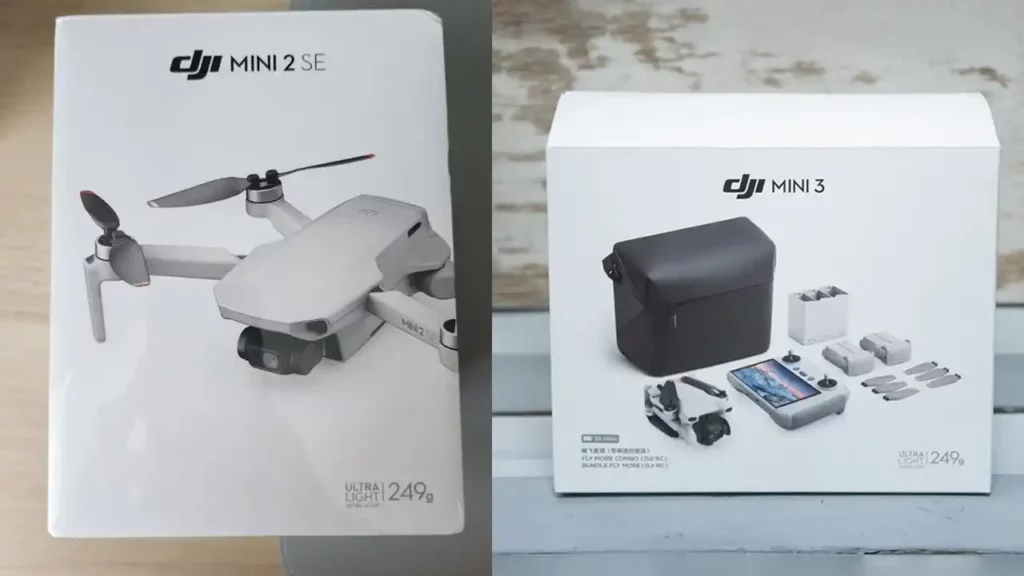
When it comes to price, the DJI Mini 2 SE is undeniably a more budget-friendly option for drone enthusiasts who are looking to delve into the world of aerial photography and videography. This compact drone offers an affordable entry point without compromising on its essential features and capabilities.
On the other hand, the DJI Mini 3 comes with some notable improvements in terms of its camera features and overall durability. As a result, it comes with a slightly higher price point compared to the Mini 2 SE. For those who are willing to invest a little more in their drone, the Mini 3 offers an enhanced flying experience.
Considering the pricing aspect, it ultimately boils down to individual preferences and budget constraints. Both the DJI Mini 2 SE vs Mini 3 deliver exceptional performance, user-friendly interfaces, and safety features that cater to both beginners and experienced drone users.
Making the Right Choice
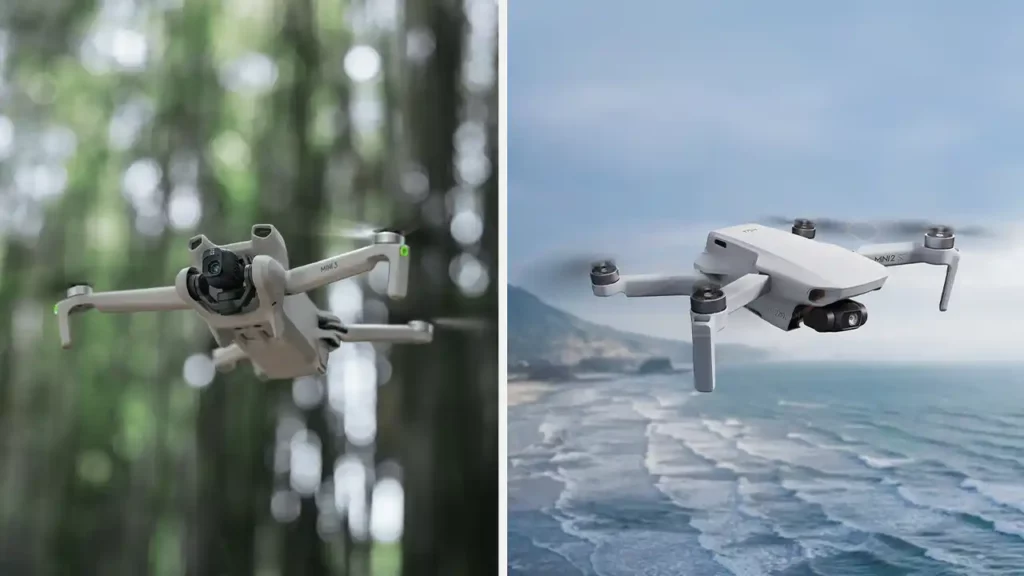
The decision between the DJI Mini 2 SE vs DJI Mini 3 largely depends on individual preferences and budget considerations. The Mini 2 SE provides a more affordable option for those who are just starting with drones or have a limited budget. It still delivers impressive performance and essential features, making it a great choice for beginners.
On the other hand, the Mini 3 caters to users who prioritize enhanced camera capabilities and durability. With its upgraded camera sensor and improved video quality, it is an excellent choice for enthusiasts and professionals who seek more advanced aerial photography or videography options.
Regardless of the choice, both the DJI Mini 2 SE vs Mini 3 offer versatile options in the compact drone market. They deliver outstanding performance, user-friendly interfaces, and innovative safety features. Choose the one that suits your needs and preferences, and prepare to embark on an exciting journey into the world of aerial photography and videography.
Conclusion
In comparing the DJI Mini 2 SE vs DJI Mini 3, it is clear that both offer impressive features and capabilities in the realm of compact drones. However, the DJI Mini 3 stands out with its enhanced obstacle avoidance system and additional intelligent flight modes. Ultimately, the choice between these two models will depend on the specific needs and preferences of the users, but both offer excellent options for capturing stunning aerial footage.
